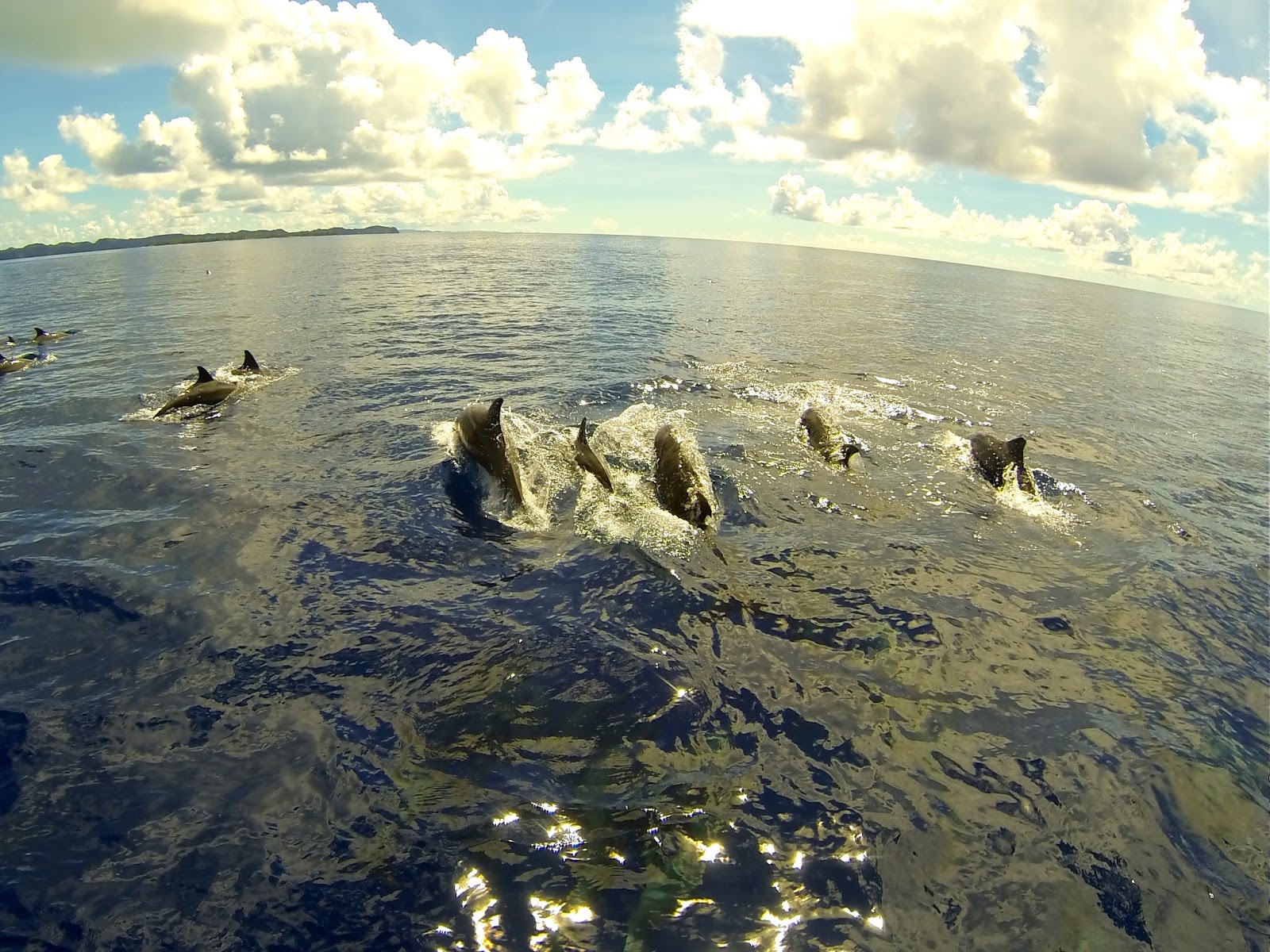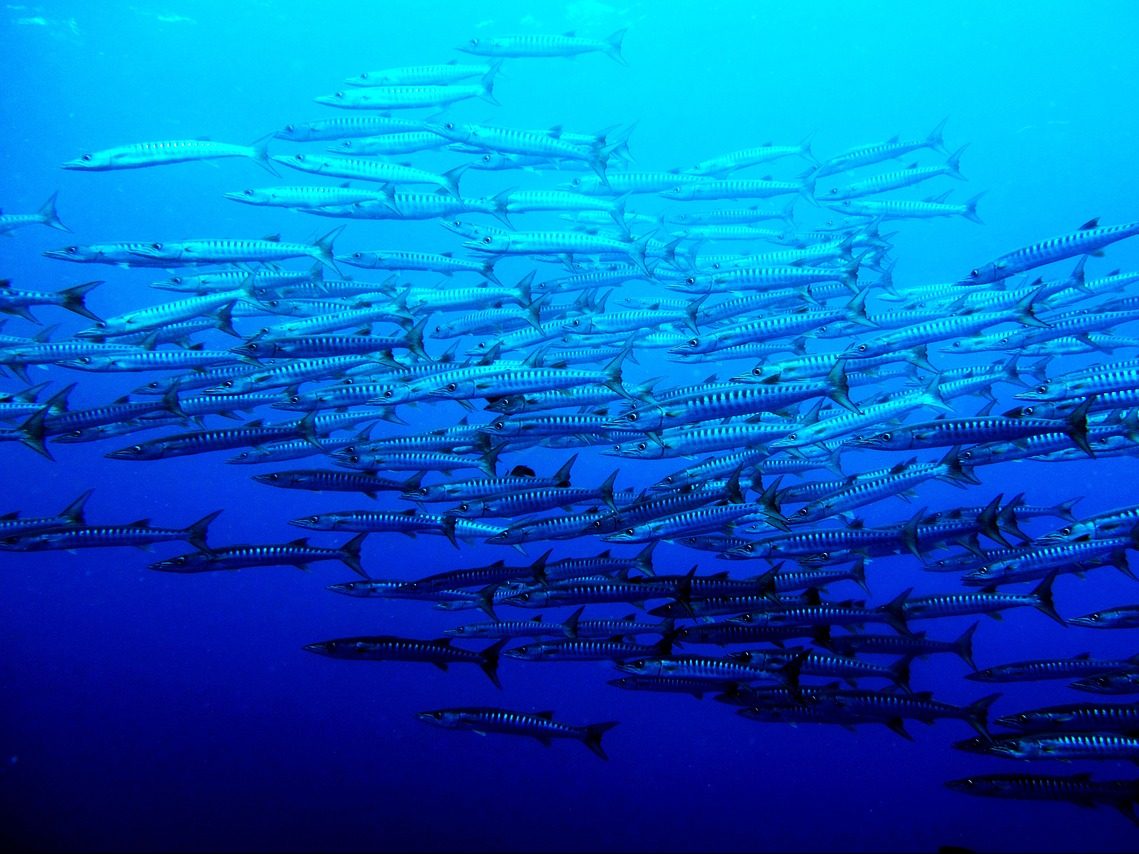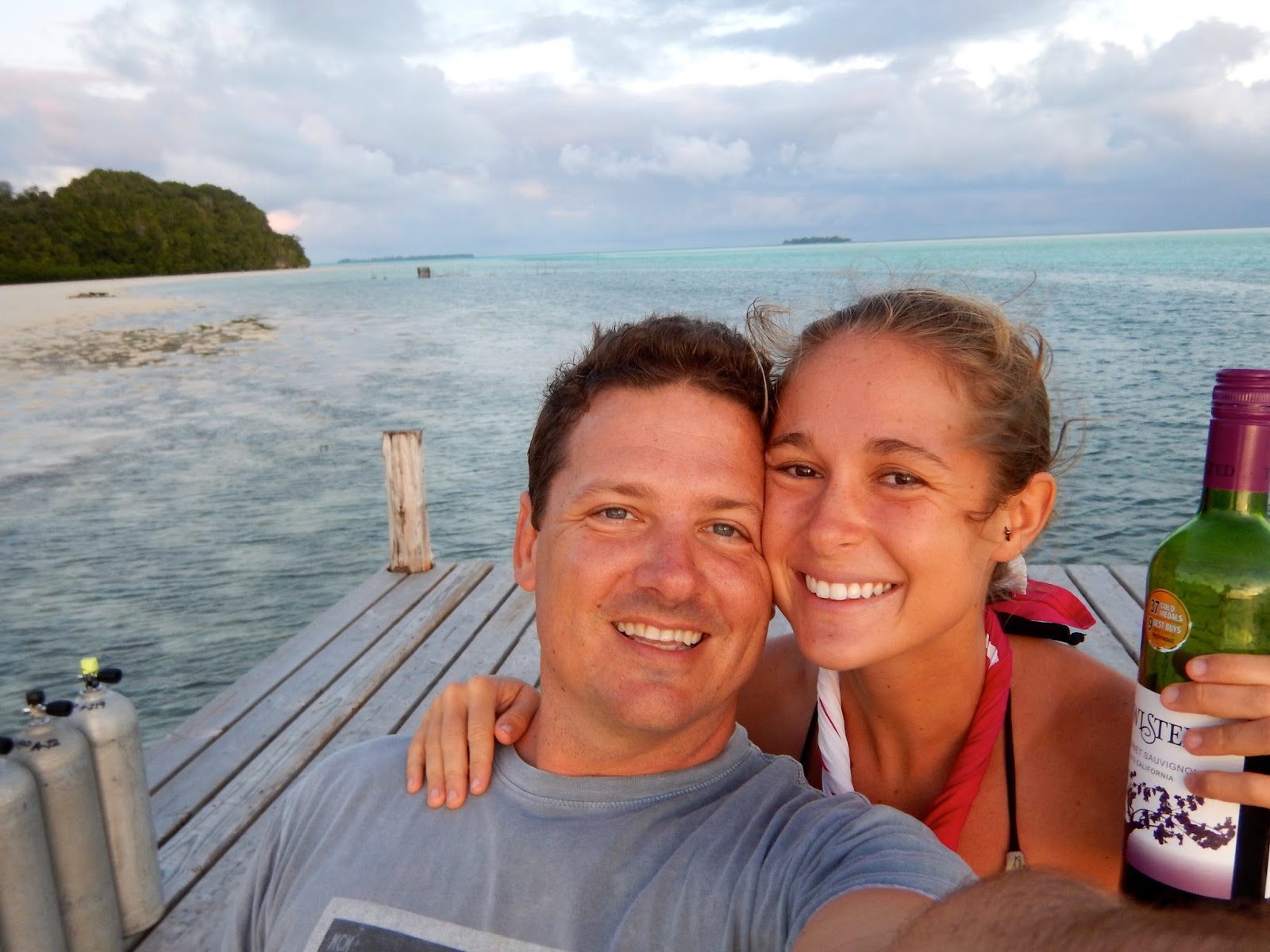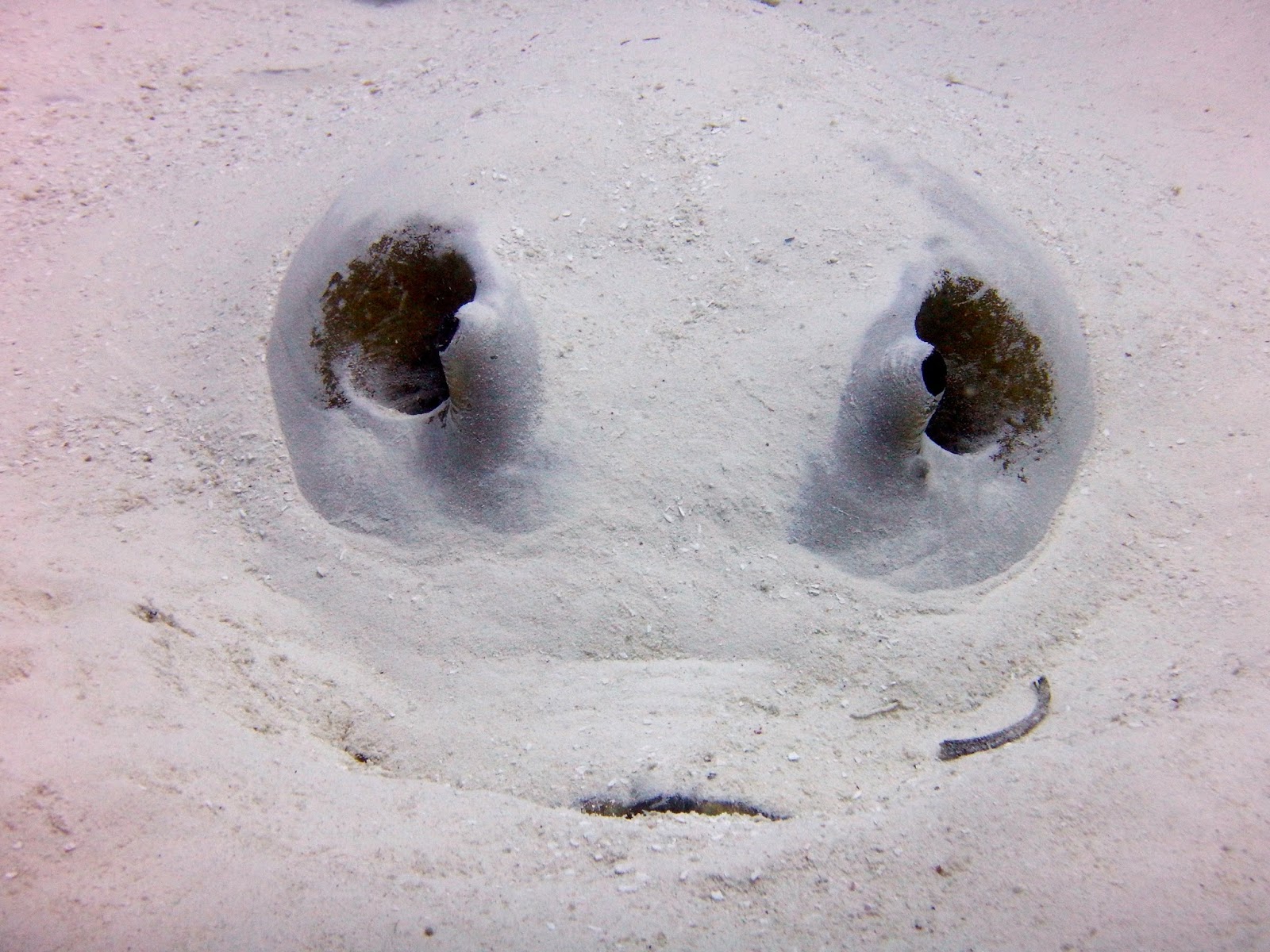
We were headed out from the dive shop Day Dream, towards Peleliu for a day of diving, when our boat suddenly veered sharply to the left and someone yelled “pilot whales!” Within moments, our boat was surrounded by bow-dancers. They would come up, several at a time to jump synchronized out of the water, and then leave the space free for the next few. It was easy to become transfixed by the whales showing off directly in front of us, but when we peeled our eyes away to the surrounding waters, we found that hundreds of the cetaceans were performing the same dance in every direction. It was magical.
Our boat meandered around in several small circles to give the whales a chance to play with us, and then slowed to a stop. Our guide asked us if we wanted to snorkel, and before a moment had gone by, everyone splashed excitedly into the water. The visibility was crystal clear, and off in the distance I saw a group of three of four of the whales. I started swimming in that direction but a moment later they were out of sight. Not nearly as entertained by a handful of humans awkwardly kicking through the water as they had been by the boat, the whales disappeared just beyond sight.
Our guide told us they were pilot whales, but the fins don’t seem to quite match up. Kyle later suggested melon-headed whales, and after doing a little research I am inclined to agree with him.
Pilot whales usually travel in groups of 10-30, but can sometimes number over 100. The species is unique in that both males and females will remain in the pod they are born in the rest of their lives. They are also one of the few species of mammals in which the female goes through menopause. (Wow, I really just brought up menopause on my blog). Their primary source of food is squid.







